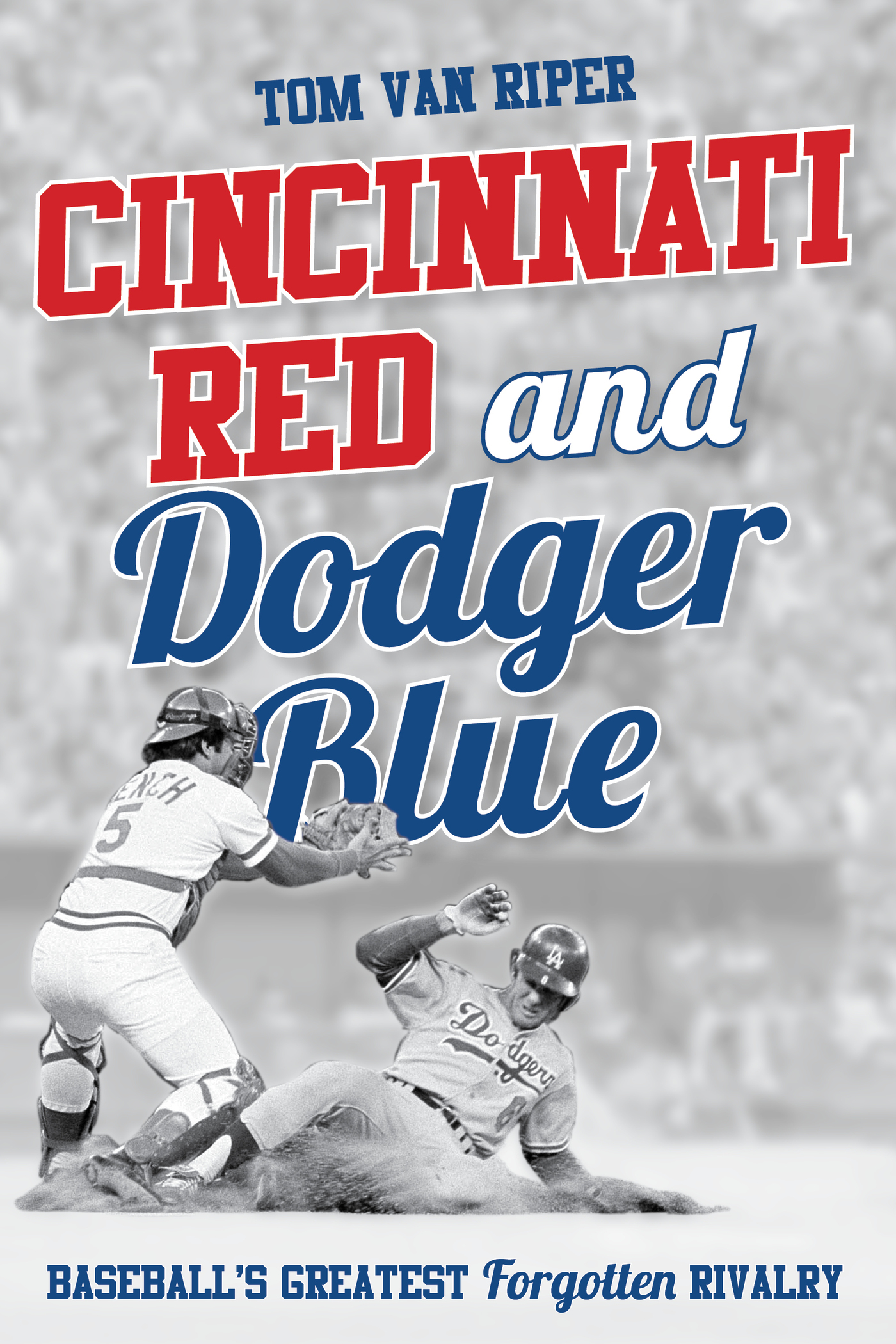Cincinnati Red
and Dodger Blue
Cincinnati Red
and Dodger Blue
Baseballs Greatest Forgotten Rivalry
Tom Van Riper
ROWMAN & LITTLEFIELD
Lanham Boulder New York London
Published by Rowman & Littlefield
A wholly owned subsidiary of The Rowman & Littlefield Publishing Group, Inc.
4501 Forbes Boulevard, Suite 200, Lanham, Maryland 20706
www.rowman.com
Unit A, Whitacre Mews, 26-34 Stannary Street, London SE11 4AB
Copyright 2017 by Rowman & Littlefield
All rights reserved. No part of this book may be reproduced in any form or by any electronic or mechanical means, including information storage and retrieval systems, without written permission from the publisher, except by a reviewer who may quote passages in a review.
British Library Cataloguing in Publication Information Available
Library of Congress Cataloging-in-Publication Data
Name: Riper, Tom Van, 1963, author.
Title: Cincinnati Red and Dodger Blue : baseball's greatest forgotten rivalry / Tom Van Riper.
Description: Lanham, Maryland : Rowman & Littlefield : 2017. | Includes bibliographical references and index.
Identifiers: LCCN 2016039731 (print) | LCCN 2017000771 (ebook) | ISBN 9781442275386 (hardcover : alk. paper) | ISBN 9781442275393 (electronic)
Subjects: LCSH: Cincinnati Reds (Baseball team)History. | Los Angeles Dodgers (Baseball team)History. | Sports rivalriesUnited StatesHistory.
Classification: LCC GV875.C65 R56 2017 (print) | LCC GV875.C65 (ebook) | DDC 796.357/64dc23
LC record available at https://lccn.loc.gov/2016039731
 TM The paper used in this publication meets the minimum requirements of American National Standard for Information Sciences Permanence of Paper for Printed Library Materials, ANSI/NISO Z39.48-1992.
TM The paper used in this publication meets the minimum requirements of American National Standard for Information Sciences Permanence of Paper for Printed Library Materials, ANSI/NISO Z39.48-1992.
Printed in the United States of America
For my family. And for all the friends
I grew up watching baseball with.
Acknowledgments
I would like to thank the following people for their time and insights provided during interviews for this book: David Adelman, Jack Billingham, Ron Cey, Bob Costas, Al Downing, Steve Garvey, Ken Griffey Sr., Ross Grimsley, Tommy John, Dr. Spero Karas, Mike LoPresti, Jon Matlack, Claude Osteen, Ed Quinn, Jeff Ruby, Allan Sarver, Donald Van Hess, and Jeff Weller.
Also thanks to my literary agent, Ellen Scordato of Stonesong Press, and to my editor, Christen Karniski of Rowman & Littlefield, who made this a better book.
Prologue
September 21, 1973, Innings 1 and 2
Claude Osteen stands calmly behind the Dodger Stadium pitchers mound, his gloved right hand raised, as he awaits third baseman Ron Ceys easy toss. His warmup complete, the ball dutifully zipped around the infield, the veteran left-hander takes Ceys throw and climbs back onto the mound, poised to make his 335th start as a Los Angeles Dodger. Stepping into the batters box is Pete Rose, the Cincinnati Reds leadoff man and the National Leagues leading hitter, in search of hit number 223 of the season and number 2,145 of his brilliant 11-year career.
Sixteen years earlier, Osteen and Rose had played high school baseball just 20 miles from each other in southern Ohio, Rose at Western Hills High in Cincinnati and Osteen at Reading High School in the northern suburbs. Theyd since had plenty of battles as major leaguers, probably none of them bigger than tonights.
September 21, 1973, is a typically warm, comfortable Friday night in Los Angeles. More than 46,000 people, relieved to be out of the local traffic and in the stadium, settle into their seats as Rose, a switch-hitter batting right-handed against Osteen, ducks into his exaggerated crouch and awaits the games first pitch. The fans are doing their best not to let the Dodgers September slump get them down. Surely this wasnt the beginning of the end of the National League West pennant race, was it? After finishing second for three straight seasons, two of those behind the Reds, this was supposed be L.A.s year. Youth and experience were blended throughout the lineup. The pitching was deeper than ever. Baseball Digest, the sports bible of the day, had picked them to finish first. This season, so it seemed, was the sweet spot.
Back on the last day of June, the Dodgers had been cruising along with a six-and-a-half-game lead over the San Francisco Giants and an 11-game lead over fourth-place Cincinnati in the National League West. But there was a reason why the Reds, with their powerful lineup and underrated pitching, were the defending National League champs. Their midsummer hot streak had tightened things up with Los Angeles as the Giants fell back. Then an early September swoon by the Dodgers had turned the tables altogether. Now with the 1973 season approaching its final week, the Reds led the Dodgers by four and a half games. The Reds had nine games left to play and the Dodgers sevenpossibly eight if the completion of an earlier suspended game in Atlanta became necessary. The Dodgers shot at making up needed ground was right in front of thema three-game head-to-head series on their home field. Realistically, if not mathematically, they needed a sweep. And whos to say they couldnt get it? After a brutal early September, the Dodgers had recently stirred back to life to win six of their past eight games. And they had three talented and battle-tested pitchersOsteen, Don Sutton, and Tommy Johnlined up to face the Reds this weekend.
Far from being overpowering, Osteen thrives on keeping opposing hitters off balance with a mix of sinking fastballs, sliders, and changeups. Twice a 20-game winner in his career, he sports a 1610 record and a 3.36 ERA heading into tonights game. Hes what baseball people later came to describe as a contact pitchertypically giving up a lot of hits before worming his way out of trouble. But Osteen has little trouble at the onset tonight. Rose immediately sends an opposite-field fly ball to right fielder Willie Crawford, who handles it easily for the first out. Joe Morgan follows with a ground ball to shortstop Bill Russell, who throws him out at first. After Tony Perez reaches on an infield single, cleanup hitter Andy Kosco, a platoon player starting in right field and hitting unusually high in the order with the Reds slugging catcher, Johnny Bench, out serving a two-game suspension for bumping an umpire, hits another grounder to Russell, who again fires the ball to first baseman Bill Buckner to retire the side.
On the mound for the Reds tonight is Jack Billingham, their lanky six-foot-four-inch right-hander who began the season number two in the starting rotation but who has since clearly emerged as the staff ace. Tall, lean, and armed with a sharp breaking ball that can be murder on righty hitters, Billingham has come into his own this year, his second in Cincinnati, as the National Leagues top workhorse. Tonights start is his 38th of the season; hell wind up with league-leading totals of 40 starts and 293 innings. Going for his 19th win tonight, Billingham faces a Dodger lineup armed with speed and four left-handed hitters capable of driving balls to the outfield gaps. And with Bench out tonight, Billingham will be throwing to Bill Plummer, a capable reserve catcher with a strong arm, but not quite as intimidating as Bench when it comes to keeping would-be base stealers in place.
And sure enough, the Dodgers first speedster, leadoff man Davey Lopes, greets Billingham by lining a single through the infield. But Lopes, the Dodgers second baseman and the National Leagues fifth-leading base-stealer, isnt running as Billingham gets Buckner to pop out to third baseman Denis Menke. Lopes does reach second on a slow infield grounder by Willie Davis, the Dodgers number three hitter and veteran center fielder, who is thrown out by shortstop Darrel Chaney. When cleanup hitter Joe Ferguson also grounds out to Chaney, Lopes is left stranded. One full inning in the books and no score.
Next page
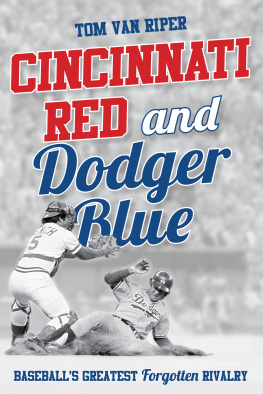
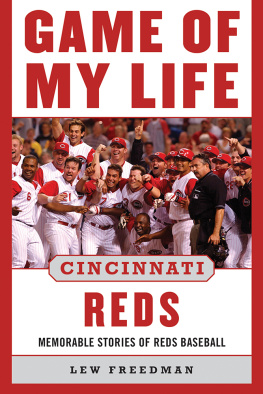

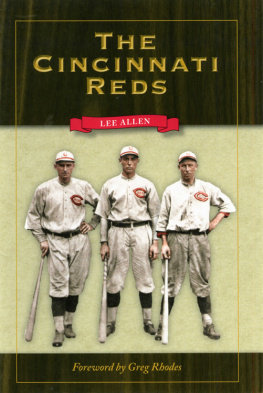
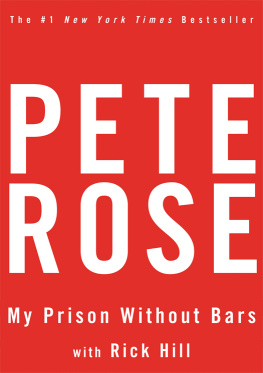
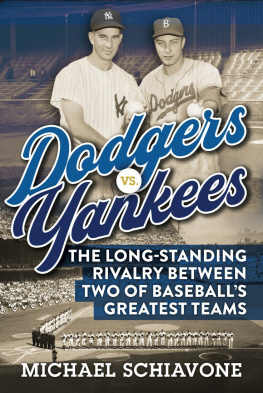
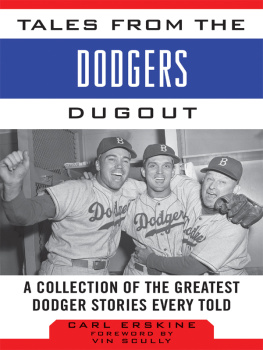
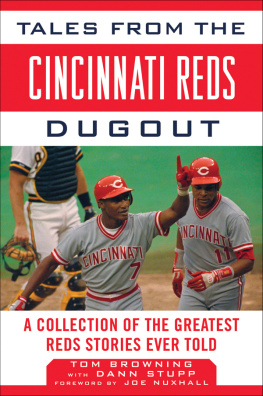
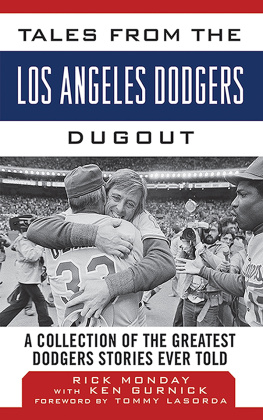
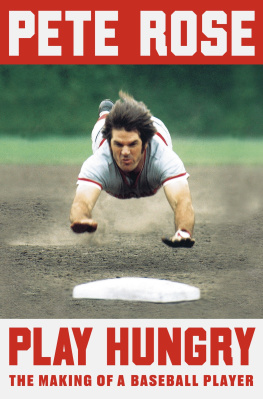
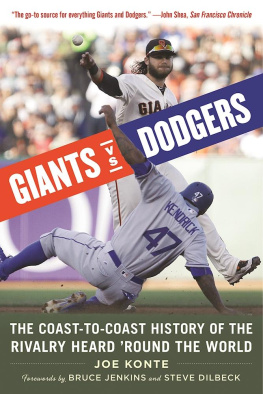
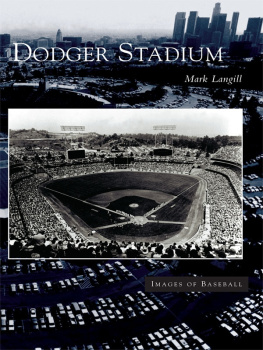

 TM The paper used in this publication meets the minimum requirements of American National Standard for Information Sciences Permanence of Paper for Printed Library Materials, ANSI/NISO Z39.48-1992.
TM The paper used in this publication meets the minimum requirements of American National Standard for Information Sciences Permanence of Paper for Printed Library Materials, ANSI/NISO Z39.48-1992.